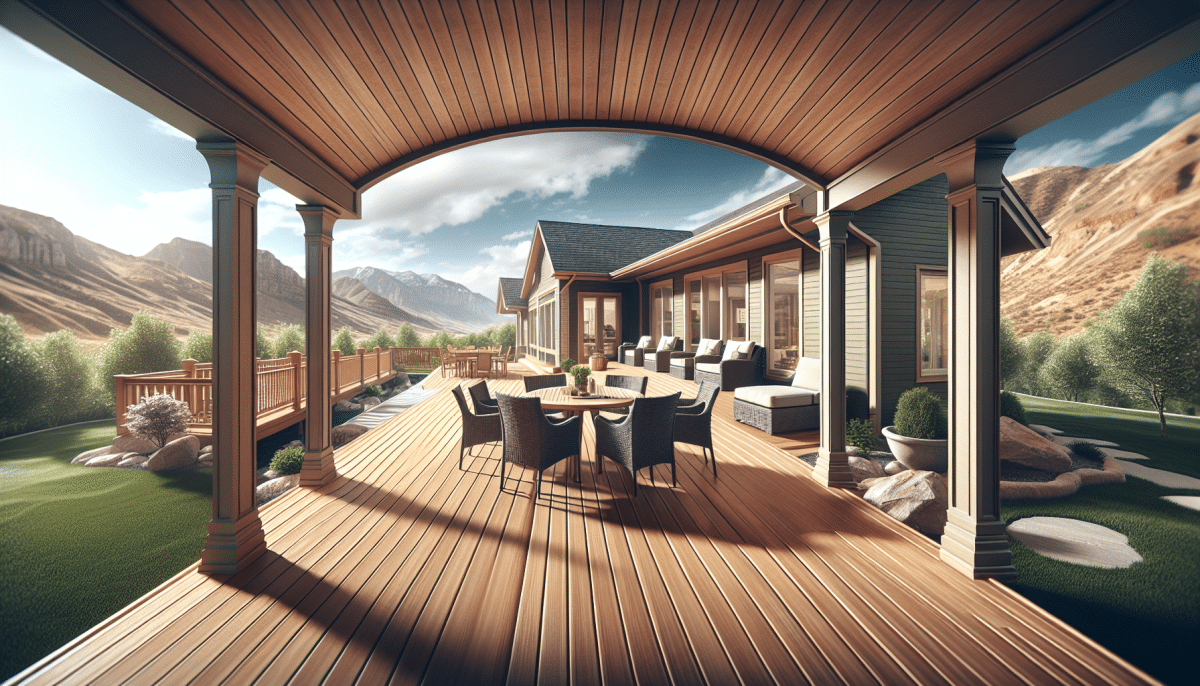Pressure-treated decking is a must-have for homeowners looking to enhance their outdoor living space with both beauty and durability. At Utah Deck Supply, we understand the importance of high-quality decking Materials. This guide is designed to navigate you through everything about pressure-treated decking, ensuring you make an informed decision for your home. From selection to maintenance, we’ve got you covered.
Why Choose Pressure-Treated Decking?
When it comes to decking, pressure-treated wood stands out for its durability and affordability. The process of pressure treating wood involves infusing it with chemicals that protect it from rot, insects, and weather-related damage. This makes it a wise choice for any homeowner looking to invest in a lasting outdoor space. Not only does pressure-treated decking require less maintenance than untreated wood, but it also offers peace of mind knowing your deck is built to withstand the elements.
Moreover, the aesthetic appeal of pressure-treated wood beautifully complements any home. Whether you’re aiming for a classic or contemporary look, the natural beauty of wood ensures your deck blends seamlessly with your outdoor environment. With the right stain or paint, pressure-treated decking can be customized to match your home’s style perfectly.
Understanding the Treatment Process
The process of creating pressure-treated wood is quite fascinating. It involves placing wood in a depressurized holding tank which removes the air and replaces it with a preservative. This method allows the chemicals to deeply penetrate the wood, providing protection that can’t be matched by surface treatments. The type of chemical used can vary, but it’s always designed to protect against fungi, insects, and decay.
It’s crucial for homeowners to understand this process as it directly affects the maintenance, longevity, and safety of their decking. Knowing what chemicals your decking has been treated with can guide you in making better decisions regarding the handling, cutting, and disposal of pressure-treated wood.
Choosing the Right Type of Pressure-Treated Wood
- Consider the Grade: Not all pressure-treated woods are the same. Higher grades are less likely to warp or have knots, which is essential for a smooth, uniform deck.
- Know the Use: Different projects require different types of treated wood. For instance, wood for ground-contact needs different treatment levels compared to wood that will be used above ground.
- Understand the Retention Levels: The amount of preservative retained in the wood can affect its durability. Higher retention levels typically mean better long-term protection.
- Choose the Right Species: Depending on your location, certain wood species might perform better. Pine, for example, is commonly used but Cedar might be chosen for its natural resistance to decay.
- Environmental Considerations: Look for wood treated with eco-friendly preservatives if environmental impact is a concern for you. This choice helps in promoting a healthier outdoor living space.
Installation Tips for Pressure-Treated Decking
Proper installation is crucial for maximizing the lifespan of your pressure-treated deck. Always start by checking local building codes to ensure compliance with all requirements. It’s also vital to allow the wood to acclimate to your outdoor environment for a few weeks to reduce the natural expansion and contraction process.
When installing, leave adequate space between boards for water drainage and expansion. Using the right fasteners is also important; stainless Steel or galvanized screws and nails are recommended to avoid rust. Remember, taking your time and doing it right during installation will save you a lot of time and money on maintenance down the road.
Maintenance Guide for a Lasting Deck
Maintaining your pressure-treated deck is simpler than you might think. Regular cleaning with a mild detergent and water can prevent mildew and keep your deck looking beautiful. It’s also crucial to re-stain or re-seal your deck every two to three years to protect against the elements. This not only prolongs the life of your deck but also maintains its aesthetic appeal.
Be on the lookout for any signs of wear or damage, such as splintering, cracks, or loose boards. Early detection can prevent minor issues from becoming major problems. With consistent care, your pressure-treated deck can remain a sturdy and attractive feature of your home for many years to come.
The Cost Benefits of Pressure-Treated Decking
One of the main attractions of pressure-treated decking is its cost-effectiveness. Compared to other materials like composite or PVC, pressure-treated wood offers a significantly more affordable option. This makes it an excellent choice for homeowners working within a tight budget but still desiring a beautiful and durable outdoor space.
Additionally, the longevity and low maintenance requirements of pressure-treated decking further enhance its cost benefits. While it may require an initial investment for treatment and installation, the savings gained from reduced maintenance and repair costs over time make it an economically wise choice. Plus, a well-maintained pressure-treated deck can increase your home’s value, making it a smart investment.
Innovations in Pressure-Treated Wood Technology
The world of pressure-treated wood is always evolving, with new technologies making it even more durable and environmentally friendly. Recent innovations include the development of non-metallic preservatives and treatments that reduce the wood’s tendency to crack, warp, or shrink. This means today’s pressure-treated decks are more durable and aesthetically pleasing than ever before.
Moreover, advancements in treating methods have led to pressure-treated woods that are safe for use around pets, plants, and children. This has opened up greater possibilities for homeowners to create safe, beautiful outdoor living spaces without compromising on safety or sustainability.
Before kicking off your decking project, it’s essential to understand the permitting process. Most localities require a permit for new deck construction or significant renovations to ensure safety and compliance with local codes. Begin by visiting your local building department’s website or office to gather all necessary information.
Taking the time to secure the proper permits might seem like a hassle, but it’s a crucial step that protects you as a homeowner. It ensures your deck is built to safety standards and can help avoid costly mistakes or legal issues in the future. Don’t see it as a hurdle; view it as a step towards creating your dream outdoor space.
Accessorizing Your Pressure-Treated Deck
Once your pressure-treated deck is installed, the fun part begins: accessorizing. Adding features like railings, built-in seating, or planter boxes can enhance both the functionality and appearance of your deck. Lighting is another crucial aspect, with options ranging from solar-powered post caps to recessed LED deck lights, creating a cozy ambiance for evening gatherings.
Don’t forget about Shade structures, such as pergolas or umbrellas, which can add comfort and style. With thoughtful planning and design, your pressure-treated deck can become a versatile outdoor living space tailored to your lifestyle, whether you’re entertaining friends or enjoying a quiet evening under the stars.
Conclusion
Great decks start with great materials. Pressure-treated decking offers the perfect combination of affordability, durability, and beauty. Armed with this guide, you’re now ready to make informed decisions for your decking project. For more expert advice or to kickstart your decking transformation, don’t hesitate to reach out to us by phone at 385-993-5492 or Request a Free Quote. Transforming your outdoor living space is just a call or click away.




